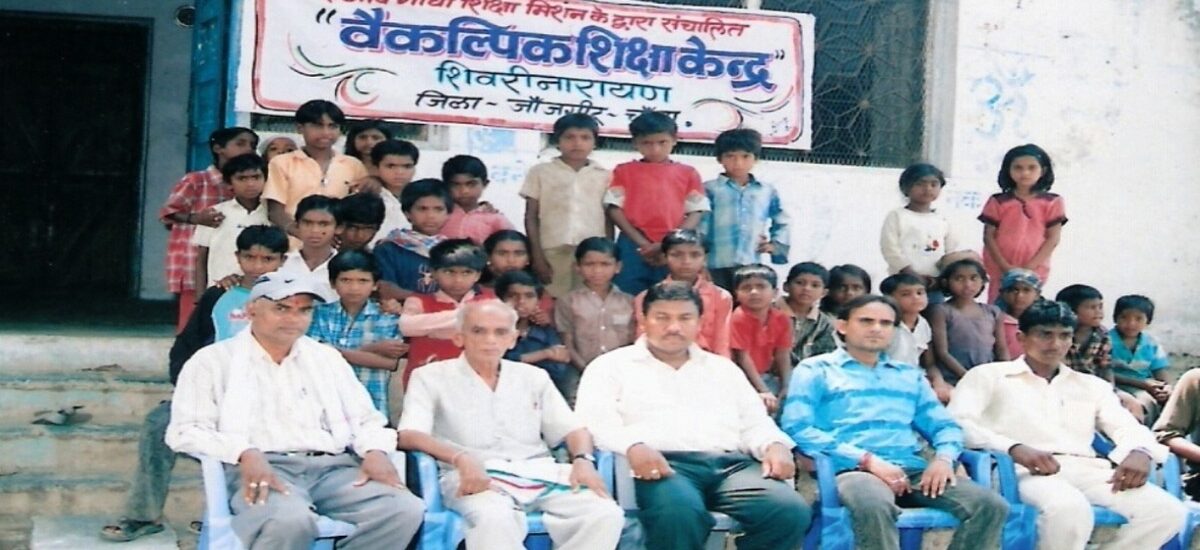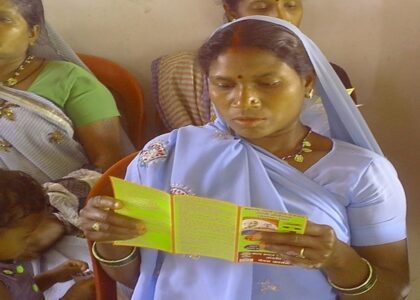
Education for dropout children
Project Summary:
The project educated 100 girls and boys (drop out/out of school) with basic level of education in sustainable Community Based Schools to be established by Kalp Samaj Sevi Sanstha.
Project Goal:
“Vulnerable children have improved access to quality education in targeted areas.”
The proposed project would adopt a two-pronged approach expanding the number of non-formal schools along with enhancing the quality of the teaching offered in the schools. Quality of education is viewed as the learning outcome of students which is primary concern of all stakeholders. Quality learning cannot be expected without quality inputs. Quality inputs would include adequate place/space, trained teachers, teaching kit, refresher courses for teachers, supplementary reading material for teachers and students, community support and local government involvement.
Project Beneficiaries:
The project has implemented in Nawagarh block of Janjgir Champa district of Chhattisgarh state and benefited 100 vulnerable school age girls/boys, their parents and local community members by addressing the following issues:
- Inaccessibility of quality education to vulnerable children.
- Parents’ preference for child labor than education.
- Scarcity of trained female teachers in remote areas.
- Gender insensitivity.
The project will have greater impact on the social fabric of these villages as community schools will continue to function as educational and advocacy institutions to address vulnerabilities of girl child in these remote villages.
Project Activities:
- Stakeholders’ meetings & surveys to ensure coordination & collect data.
- Village meetings to organize parent & motivate community.
- Establish schools to educate 2400 girls.
- Technical support to train local teachers.
- Advocacy events for Girl’s education.
Problems of Access to Education
Access is the first of two main issues with regard to primary education. Inaccessibility of primary education is a result of distance, child labor, male preference, scarcity of teachers, local leaders’ fear of losing power and frequent policy changes. The problem of access applies to both girls and boys; however, it is more serious for girls.
Distance: Many children have to travel miles to reach school which is not possible for them, especially for the girl child because culturally they are supposed to stay close to home. Of the total number of primary schools in Pakistan, girls’ schools represent only 39 percent with boys’ schools representing 55 percent according to UNESCO study in 2000. The reason that schools are far away is that resources allocated by government for primary education are insufficient to meet the needs and are often politicized. Many families cannot afford traveling expenses for their children. Those who can afford transport it is often not available. Additionally, teachers that do not belong to the same community are sometimes unable to attend school daily because of above-mentioned problems.
Child labor: Children often do not attend school because they are working to support their families for their survival. According to UNICEF, 17.6 % of Pakistani children are working and supporting their families, 8 million children under the age of 14 are laborers at brick kiln factories, the carpet weaving industry, agriculture, small industries and domestic services across Pakistan. Therefore child labor is not an isolated problem. It is an outcome of social, economic and traditional factors.
Scarcity of teachers: There is a critical need to increase the number of teachers in Pakistan, especially female teachers. The need for more female teachers in this regard cannot be underestimated. The presence of women teachers boosts parents’ confidence in the safety of their daughters, encouraging them to send their daughters to school, especially in conservative areas. The scarcity of female teachers is due to distance from training institution and lack of residential facilities. Secondly, females are not allowed to stay in residential institutions because of cultural norms.
Fear of losing power: Local leaders oppose girls’ education out of fear of loosing power. For example, some of the government and non-government organizations have tried to open formal and non-formal schools in these areas, but the landlords, oppose such measures, apparently out of fear that people who become literate will cease to follow them with blind faith.
Results:
Targeted children have increased attendance in schools.
Out of school children enrolled in schools.
Community participation in management of non-formal education.








